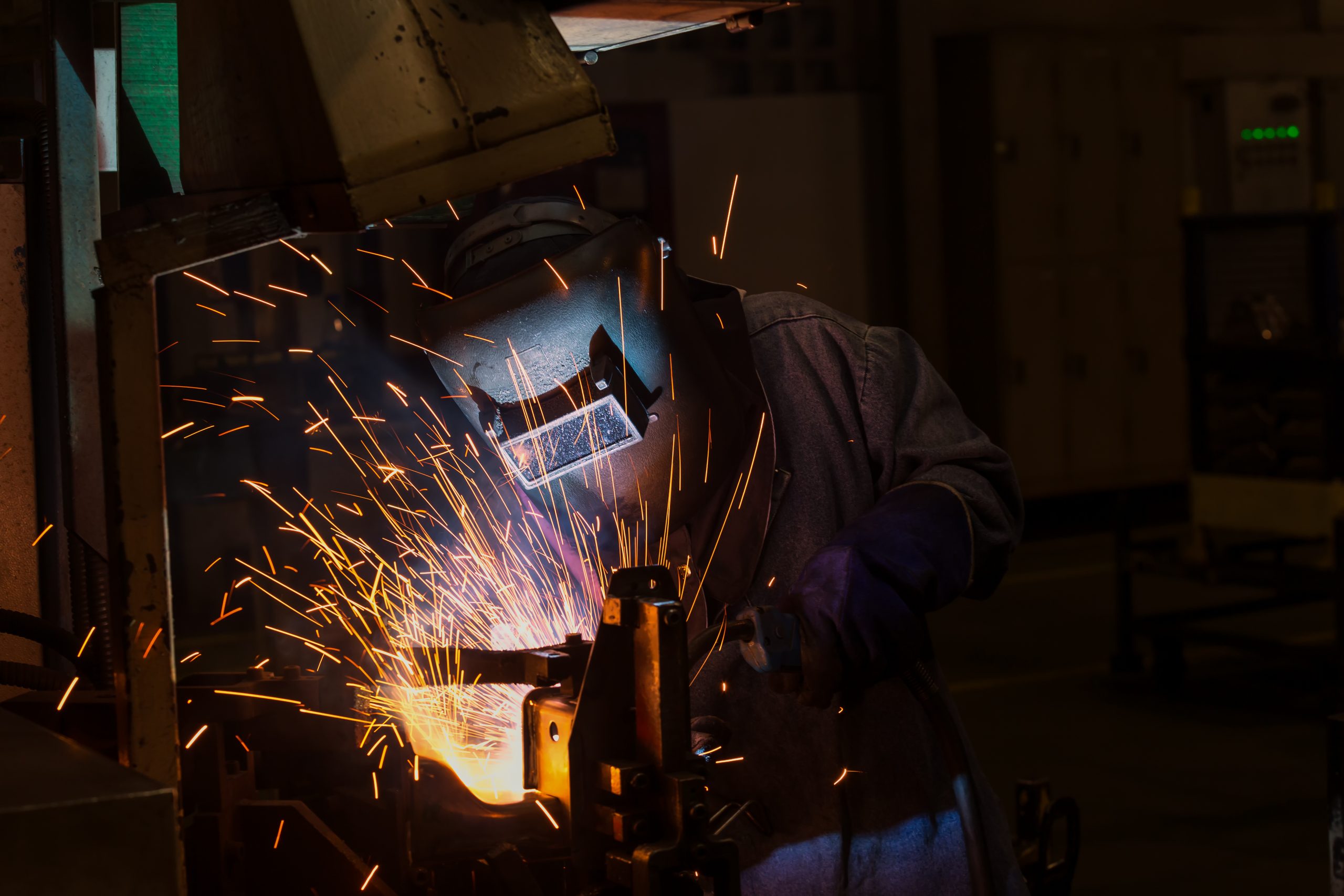Parties to the MEIBC vote overwhelmingly for gazettal and extension of 2021-2024 metals and engineering main agreement
Johannesburg, 29 June 2022 – Parties to the Metals and Engineering Industries Bargaining Council (MEIBC) today voted overwhelmingly in favour of the extension of the three-year agreement reached in the metals and engineering sector in 2021.
During an historic meeting of the parties at the MEIBC this morning, during which all employer organisations registered with the council were in attendance:
- The five-trade unions that are party to the council – namely, MEWUSA, NUMSA, SAEWA, Solidarity and UASA – all supported the extension of the Main Agreement to non-parties; and
- The 18 SEIFSA-affiliated Employer Organisations, the Plastics Converters Association of South Africa (PCA-SA) and the Consolidated Employers Organisation (CEO), whose membership collectively employ the overwhelming majority of the employees employed by all the members of the employers’ organisations that are party to the bargaining council, voted in favour of extension.
Steel and Engineering Industries Federation of Southern Africa (SEIFSA) Chief Executive Officer, Lucio Trentini said that the employer organisations supporting the extension of the 2021-2024 Main Agreement represent 71,57% of all employees employed by all the employers that are members of the Employer Organisations registered with the Bargaining Council, with SEIFSA-affiliated member companies alone representing 56,15% of those employees.
Mr Trentini revealed that the latest determination of the representativeness of the MEIBC issued by the Department of Labour in terms of Section 49 of the Labour Relations Act had shown that of the 468,874 employees in the industry, a total of 308,605 (65,81%) worked for employers represented by the employer organisations that are party to or registered with the Bargaining Council.
“The SEIFSA-affiliated employer Associations alone represent 56,15% of those employees,” he said.
According to the Department of Employment and Labour’s determination of representatives, NEASA represents 19,15% of employees working for companies registered with the council, the Plastics Converters’ Association of SA represents 10,81%, the South African Engineers and Founders Association represents 6%, the Confederation of Employers Organisation represents 4,60%, the South Africa United Commercial & Allied Employers Organisation represents 2,56% and the Federated Employers Organisation of SA represents 0,73%.
“In the case of a section 32 extension, where an agreement is negotiated and concluded by bargaining agents who represent and employ the majority of employees falling within the council’s coverage, the extension of a bargaining council agreement is seen as a reasonable and necessary mechanism of collective bargaining,” said Mr Trentini.
He referred to the finding by Judge John Murphy, who had ruled, on behalf of a full bench of the North Gauteng (Pretoria) High Court in the 2016 Free Market Foundation (FMF) v Minister of Labour & Others Judgment, that the extension of a bargaining council’s collective agreement was legal, provided that one or more registered trade union/s whose members constitute the majority of the members of the trade unions that are party to the bargaining council vote in favour of the extension, and one or more registered employers’ organisations, whose members employ the majority of the employees employed by the members of the employers’ organisations that are party to the bargaining council, vote in favour of the extension.
During the MEIBC meeting this morning,
- The five-trade unions that are party to the council – namely, Mewusa, Numsa, Saewa, Solidarity and Uasa – all supported the extension of the Main Agreement to non-parties; and
- The 18-SEIFSA affiliated Employer Organisations, the Plastics Converters Association of South Africa (PCA-SA) and the Consolidated Employers Organisation (CEO), whose membership collectively employ the overwhelming majority of the employees employed by all the members of the employers’ organisations that are party to or registered with the Bargaining Council, voted in favour of extension.
Together, the 18 SEIFSA-affiliated Associations – which represent small, medium and big businesses across the sector – the Plastics Converters Association of South Africa (PCA-SA) and the Consolidated Employers Organisation (CEO) account for 71,57% of all employees employed by all the employer organisations on the bargaining council.
Mr Trentini explained that the Collective Main Agreement concluded on 21 October 2021 for the period 1 July 2021 to 30 June 2024, will now be forwarded to the Department of Employment and Labour with a request for the Minister of Labour to gazette the Agreement and make it legally binding on all employers and employees falling within its scope.
The Main Agreement guarantees certainty, stability and peace
In an uncertain economic environment such as ours, businesses often strive to ensure that they maintain stability in as many aspects of their operations as possible. This time last year, employers and labour unions were in the thick of negotiations doing their utmost to construct a deal that would find favour with each-others respective constituencies. Regrettable we were unable to avoid a bruising strike but eventually we signed a three-year wage deal which laid the foundation for a settlement agreement widely known as the Main Agreement.
The Main Agreement is the only agreement that has been signed-off by and continues to enjoy the support of all the trade unions in the Metal and Engineering Industries Bargaining Council (MEIBC). It is unique in that aside from the eighteen SEIFSA affiliated Employer Organisations and the Consolidated Employers Organisation (an independent Employer Organisation representing 671 employers, employing 14 222 employees) who is also a signatory to the Main Agreement - no other employer organisation has an agreement covering the comprehensive terms and conditions of employment within the sector that is signed-off by all the trade unions.
Whilst critics bemoan, criticise and threaten never ending legal action against the Main Agreement and its signatories, over the last two decades they have failed spectacularly to come up with a better deal - blaming SEIFSA, the unions, the bargaining council, fellow employer organisations, who now apparently have stabbed them in the back and a litany of other feeble excuses for nothing short of their own lack of imagination and foresight.
Collective bargaining in South Africa and particularly in our sector, where we deal with some of the largest unions in the country is no easy feat – it’s tough!
Negotiations in the metals and engineering industry is a terrain for deeply contested ideas, creative thinking and eventually the crafting of unique and unparalleled deals not seen anywhere else in SA. In 2020 SEIFSA concluded a one-year wage freeze or stand-still agreement - a feat that remains unmatched in the South African collective bargaining landscape.
SEIFSA for years has pioneered long term agreements, wage modelling, defending to the hilt the right of labour brokers to practice their chosen profession no different to any other employer in our sector and a host of employer friendly terms and conditions of employment. Concluding deals requires a deep commitment to building respect, trust and relationships not only with one’s own constituency but more importantly with ones negotiating partners. Ultimately, collective bargaining is about relationships not power, possibly a lesson lost on our critics.
Any employer conducting business in the iron, steel, engineering and metallurgical industry, whether or not the employer is a member of an employer organisation, is legally obliged to register with the MEIBC. However, only employers who are members of an employers’ organisation that is a signatory to the collective agreement may make use of the various terms and conditions of employment contained in the Main Agreement.
Critics point to the wage rates contained in the Main Agreement as the key disadvantage of the agreement, but in doing so, they overlook the certainty, stability and peace that is guarantees.
We acknowledge that the wage rates contained in the Main Agreement particularly for employers who have been operating outside of the scope of the agreement for the last ten plus years are high, at least when compared to the national minimum wage of R 23.19 per hour. Last year’s settlement agreement seeks to address this in three ways, namely:
- Providing for a special phase-in dispensation to allow employers to gradually move from the national minimum wage to sixty-percent of the 2019/ 2020 minimum Main Agreement rate (i.e., R 29,73 at Rate H) by 30 June 2024;
- Reverting to the practice for all affiliated member companies to award wage increases calculated on minimum rates of pay (i.e., on Rands and cents) as opposed to a percentage increase on actual rates of pay - for last year, this year and next year. This is a significant break in practice that we’ve last seen almost 30 years ago; and
- Recognising that companies who elect to be covered by the Main Agreement through the special phase-in dispensation, will be permitted to award the rand and cents increases on what they are actually paying on the shop floor.
Wages, leave pay and leave enhancement pay aside, the Main Agreement offers a number of significant advantages for employers, for example:
- Simple guideline for the job grading of employees.
- Many terms and conditions of employment that employers take for granted and observe on a daily basis, such as hours of work, intervals and breaks, overtime rates, shift allowances, payment for working on Sunday and Public Holidays, to name a few, are all located in the Main Agreement.
- The Main Agreement contains three key provisions not found in either the Basic Conditions of Employment Act or the Labour Relations Act that allow employers to immediately respond to dips in their operating cycle caused by circumstances beyond their immediate control and implement short time, lay-off and/or being entitled to send employees home due to, for example, planned and/ or unplanned outages, load shedding and/or service delivery failures.
- The Main Agreement contains an important peace clause that protects employers from being approached to engage in plant-level bargaining, any form of industrial action during the currency of an agreement related to terms and conditions of employment and once gazetted this protection is extended to cover any trade union who may not be a signatory to the Main Agreement or registered with the bargaining council but has managed to recruit members on an employers’ shop floor.
- Over and above the special phase-in dispensation referred to above, the Main Agreement also contains a generic exemptions clause that allows any party employers to apply for exemption from any provision of the Main Agreement.
- The Main Agreement also contains an alternative working time provision that allows employers and their employees to reach agreement on a variety of alternative working time arrangements, ranging from averaging of working hours, working over week-ends at normal rates of pay, banking hours etc. to the extent that this provision refers to any alternative working time arrangement agreed between workers and management.
- In such instances, any working time agreement would trump the terms and conditions contained in the Main Agreement, with the employer retaining all the rights and protections contained in the Main Agreement.
Last year’s Settlement Agreement provides a unique opportunity for employers who have in the past opted to go it alone to align themselves with the Main Agreement with little disruption.
In an environment where service delivery is increasingly under strain and we are seeing a proliferation of trade unions across our sector compounded by the latest phenomenon of political parties beginning to venture onto the shop floor – the role of employer organisations to provide professional, mature and expert industrial relations advice and assistance is now, more than ever before, of utmost importance.
The choice for employers is whether the expert assistance that is so vital is done against a legal framework built on compliance, regulation and protection or a framework that will need to be negotiated at individual shop floor level in an environment and atmosphere that is becoming increasingly ladened with tension and anxiety. The Main Agreement provides that foundation and legal framework.
Lucio Trentini is the Chief Executive Officer of the Steel and Engineering Industries Federation of Southern Africa (SEIFSA).
Wage and Wage Related Exemptions and Special Phase-in Dispensation for the period 1 July 2022 - 30 June 2023
APPLYING FOR EXEMPTION FROM THE MAIN AGREEMENT WAGE INCREASES AND SPECIAL PHASE-IN DISPENSATION EFFECTIVE 1 JULY 2022
Introduction
SEIFSA, on behalf of the 18 affiliated Employer Associations, signed an agreement with all the trade unions in our industry on 21 October 2021 on the terms and conditions of employment for a three-year period ending 30 June 2024.
Exemptions Procedure
SEIFSA is aware that the current economic environment may pose severe constraints on certain member companies’ ability to implement the increases (see Appendix A) and these members are advised that the industry’s current wage exemption procedure continues to apply.
Furthermore, the parties have taken note that there are many employers who for one or other reason have been operating outside of the terms and conditions of the Main Agreement, particularly when it comes to rates of pay. The parties have agreed that encouraging these employers to come on board in one-step may not be feasible nor practical and will not assist in achieving the end-goal of parity on wages across the sector.
The parties have therefore agreed that in order to reach parity, phase-in will need to be approached in a stepped-phased approach and will form part of a broader project aimed at achieving parity with the Main Agreement in a managed manner over agreed time spans. Phase one of the project will focus on moving employers who may elect to be covered by the Main Agreement and/or have been operating outside of the Main Agreement to achieve 60% of the 2019/2020 Main Agreement minimum wage rates (see Appendix B).
The parties have agreed that 60% of the 2019/2020 Main Agreement minimum wage rates will be fixed for the duration of the 2021/ 2024 Main Agreement. Phase one of the project will end on 30 June 2024. The parties have agreed that during the currency of 2021/2024 Main Agreement the parties will agree on the modalities, goals, time-frames, and objectives informing phase two of the project.
Download the full management Brief on the procedure to apply for a Wage Increase Exemption
Women in STEM: A holistic approach is required to work together as equal contributors.
According to the United Nations Educational, Scientific and Cultural Organization (UNESCO), South Africa is ranked number one in Sub-Saharan Africa as having the highest portion of female STEM (Science, Technology, Engineering, Mathematics) graduates. The narrative has changed, gone are the days where STEM equals men. In the 21st Century and with the Fourth Industrial Revolution (4IR) there are enough seats at the table for everyone.
The issue of whether opportunities exist for women in STEM in South Africa is an easy yes. Nevertheless, there are still a number of obstacles women in STEM in South Africa need to navigate through - both in the classroom and the world of work. Being a woman with close to 10 years’ experience working in a predominately male dominated steel manufacturing industry, I can vouch that woman do indeed face many obstacles.
A recent report by the African Academy of Sciences (AAS) found that the leading elements which attract and influence women to pursue STEM related careers is that they believe these careers fit their capabilities. This confirms that women who pursue STEM careers believe in their capabilities to manage STEM related courses and careers. This is further corroborated by the slow yet steady increase in women pursuing careers in STEM.
There are numerous factors which cause and contribute to these obstacles. The patriarchal perception of STEM related careers, sexual harassment, lack of female representation and role models, limited mentors in the workplace, gender discrimination and inequality in the labour market, hogging of information, lack of expertise transfer, having to go the extra mile to prove one’s self as a woman in STEM etc.
It is generally universally accepted that there is only so much a textbook can teach a person. Dr Bernard Fanaroff, Special Advisor to the Minister of Trade Industry and Competition, argued the same point at the Steel Master Plan (SMP) Conference that took place on the 19 and 20 of May 2022. Dr Fanaroff stressed the difference between skills and expertise, arguing that expertise can only be gained through not only doing the work but also through mentoring and coaching. This is a key problem South Africa needs to focus on across all industries, more so where STEM and woman in STEM careers is concerned, as STEM is critical for South Africa’s economic prosperity.
Credit however needs to be given to strategies and legislation that have been enacted and are aimed at eradicating inequality, such as the Decent Work Agenda where inequality is one of the themes, the National Development Plan in its advocacy for the inclusion of women at all representative levels and the Employment Equity Act which is geared towards promoting equality in the workplace to name a few. The United Nations Population Fund (UNFPA) South Africa is also another promoter of gender equality. In addition, there is also the Commission for Gender Equality and the publication of the Code of Good Practice on the Prevention and Elimination of Harassment in the Workplace which came into effect from March 2022.
Nevertheless, and notwithstanding these worthy initiatives, the question remains - why is there still gross underrepresentation of women in STEM in South Africa?
In the President of the Republic of South Africa’s own admission in one of the State of the Nations Addresses, South Africa still remains a highly unequal society where poverty and prosperity are still defined by elements such as gender. This notwithstanding, South Africa has been successful in putting some measures in place, however, in the absence of implementation, monitoring, individuals championing of same and the right support - we are a long way-off from believing the struggle for woman and woman in STEMS has been won.
I believe more role models of women in STEM are needed to assist, not only for inspiration purposes, but for mentoring, coaching, expertise transfer as well as support.
Support needs to start in the class room and carried over into the world of work. The barrier of accessibility of information regarding STEM careers needs to be addressed and more specifically for girls in rural areas. We also need to see more initiatives to assist the girl-child in both rural and urban areas and a far greater involvement with girls early in their school careers. Access to bursaries and opportunities to be mentored also needs to be significantly expanded.
There should be more emphasis on encouraging and supporting initiatives such as Take a Girl Child to Work and Women in Mining which has greatly assisted in increasing women in the mining sector.
South Africa is in need of a targeted and strategic skill strategy for the success of our economy. This requires a holistic approach, that is for all, irrespective of gender, to work together as equal contributors.
Zizile Lushaba
Human Capital and Skills Development Executive
Steel and Engineering Industries Federation of Southern Africa




